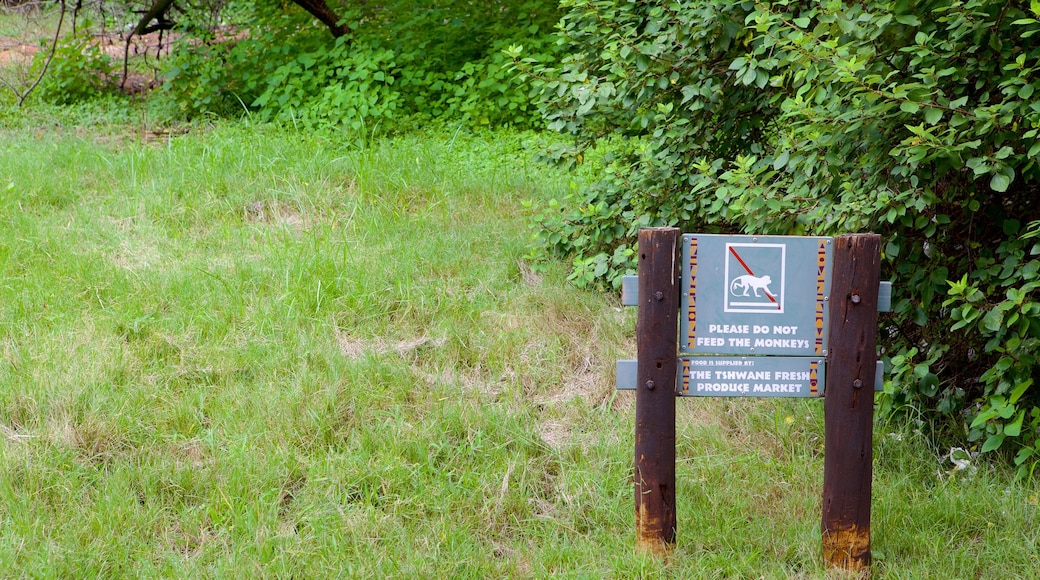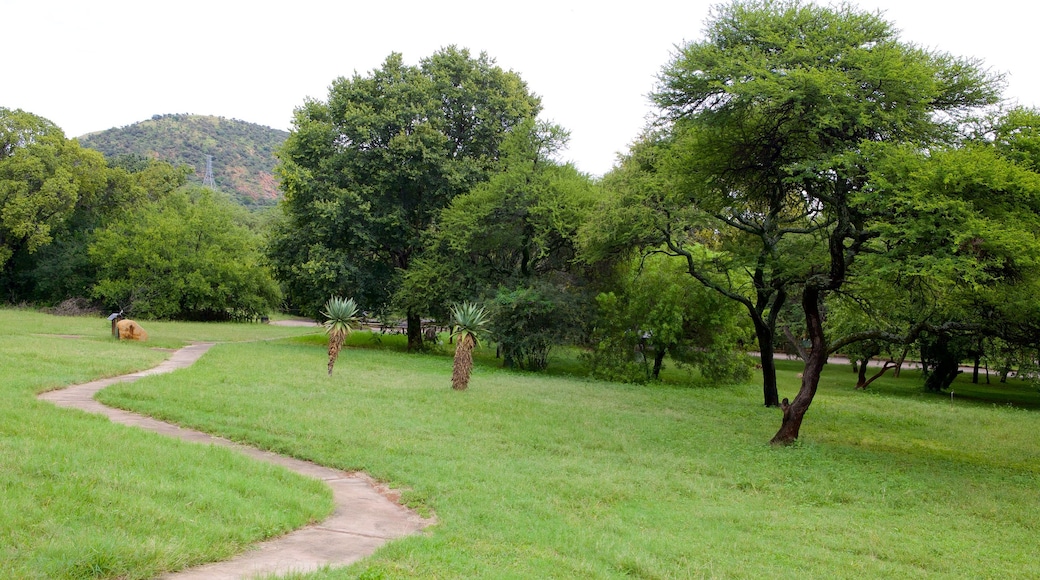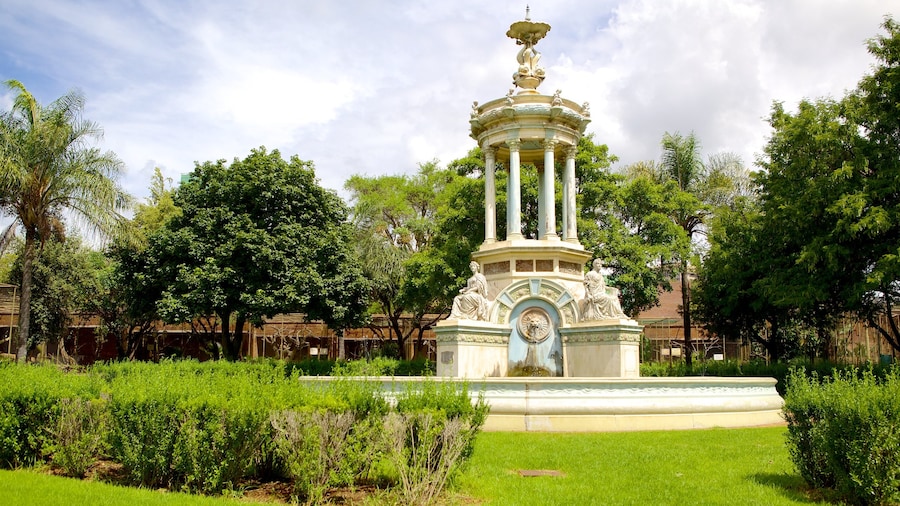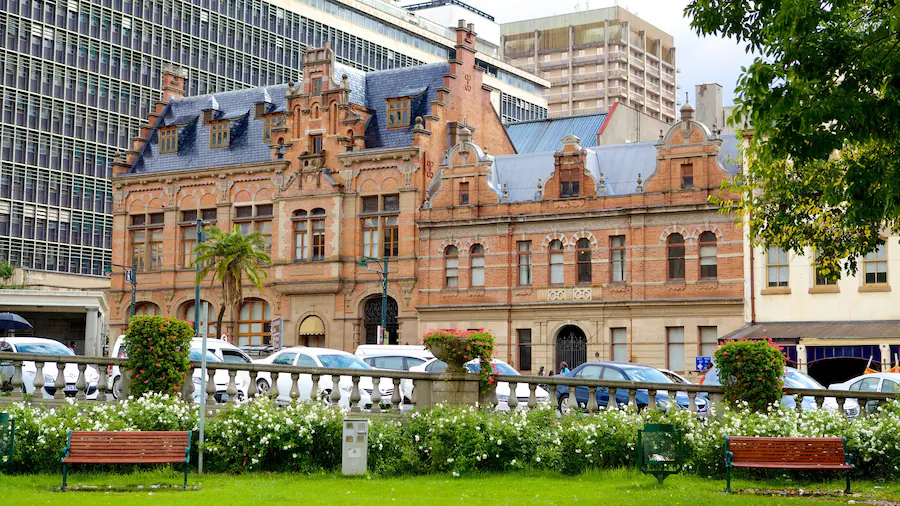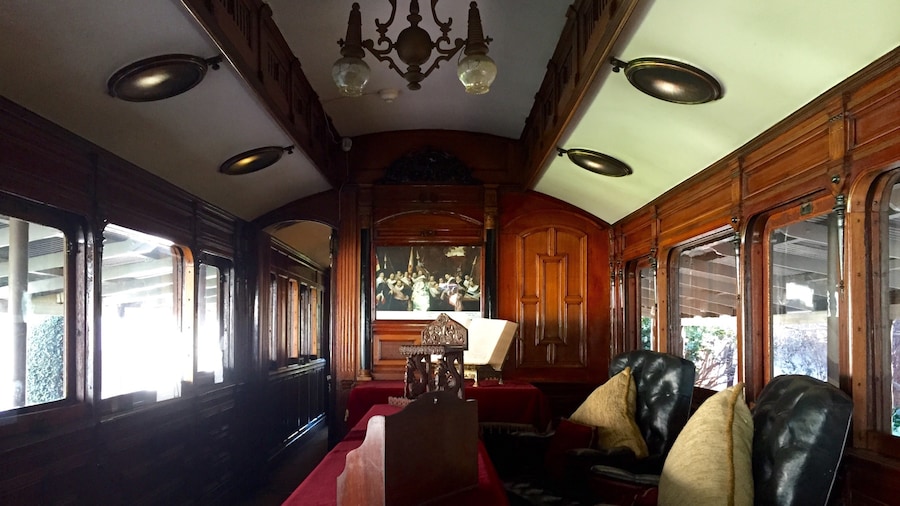See a 1,000-year-old tree and the site where Africa’s largest collection of intact stone artifacts were found at this natural and historical reservation.
Explore the 494 acres (200 hectares) of the Wonderboom Nature Reserve to find rich archaeological sites, indigenous animals and one of the most incredible trees in South Africa. Follow one of several hiking trails to discover the reserve’s natural and manmade wonders.
The Wonderboom Nature Reserve is named after the 1,000-year-old tree cluster near its entrance. Called the Wonderboom (“Miracle Tree”), this group of fig trees covers 3.7 acres (1.5 hectares). Walk into the center of the group along a boardwalk to see the mother tree from which all the rest originated. Over 75 feet (23 meters) tall and 18 feet (5.5 meters) wide, this tree is one of the oldest life forms in South Africa. Visit between August and May, when pink fruits hang from the trees.
Climb the hill next to the tree to find the Wonderboom Fort. Built by Dutch settlers, the fort was bombed in the middle of the 20th century. Today it stands surprisingly intact. Walk through the doorways of the brick and stone fortification and look south for a view of Pretoria.
At the bottom of the hill stand two sites that have proven to be extremely valuable to anthropologists. The Stone Age site has produced the largest collection of stone artifacts ever found on the African continent. An Iron Age site is here as well. Visit the site to read about some of the exciting findings made here.
Look for rock hyrax, which are marmot-like mammals, in the caves along the Apies River in the southwest of the reserve. Watch for black eagles, which are often seen gliding above the area looking for prey. Zebra, antelope and monkeys are also common on the reserve.
The Wonderboom Nature Reserve is open daily from early morning until evening. You must pay to enter. Guided tours of the park are available for an extra fee.
Located 4.3 miles (7 kilometers) north of Pretoria, the Wonderboom Nature Reserve is best accessed by car. Free parking is available across the street at the Wonderboom Junction mall.


